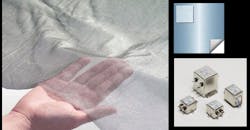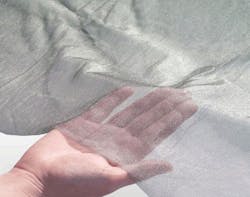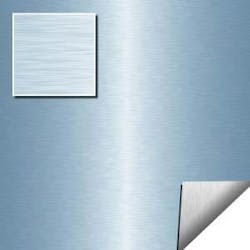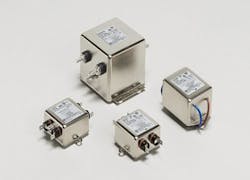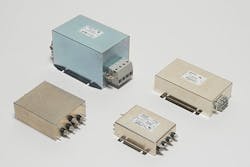Download this article in PDF format.
Noise can start from inside or outside an RF/microwave circuit or system, but it’s controllable when adding filters and shields that target electromagnetic interference (EMI) and radio-frequency interference (RFI). Both types of components provide reasonable noise suppression and, with proper planning, add little to the size and cost to a design. But why use one noise-suppressing component rather than another—what’s the difference? Some suppliers offer EMI/RFI filters as well as shielding materials and may even recommend using both at the same time. So, when does one noise blocker make more sense than the other?
EM shields are meant to prevent radiated emissions of EM fields propagating beyond a certain point, such as outside an equipment cabinet or enclosure. EM energy that propagates beyond that threshold can act as interference for other equipment (e.g., cell phones and radios), preventing their proper operation. By surrounding an EM field with a conductive barrier, such as a copper or stainless-steel gasket that seals an equipment enclosure, the EM field can be contained, and interference minimized.
When an EM wave strikes an EMI/RFI shield, two things happen. Most of the energy from the EM wave is reflected by the conductive surface of the shield, in different directions, depending on the material qualities and the phase of the WM wave at the point of impact. Some of the energy from the EM wave is also absorbed by the shield—it will be converted into heat energy that, depending on the power levels, may require additional thermal management. Some EMI/RFI shielding materials are formulated to double as shields and thermal-management materials, and can be used as both shields and heat sinks.
An EMI/RFI shield also works in both directions. It can contain EM radiation within an area described by the shielding material, but also prevents EM radiation from sources outside of the shielding protection, such as cell-phone signals and radio broadcast signals, from reaching within the area (and its circuits and components) defined by the shields. In contrast, EMI/RFI filters control EM energy traveling through conductors, such as wires and connectors, and are added to specific points along a circuit with the intention of controlling current flow at different frequencies.
Shielding materials, such as thin sheets of copper or aluminum, require good ground connections for effective EM field containment. EMI/RFI shields may also require openings in the metal sheets to release heat generated in higher-power electronic circuits, especially for shielding materials that absorb rather than reflect EM fields. The sizes of the openings should not relate to the wavelengths of the EM waves that are being contained, otherwise it will minimize the shielding effectiveness (SE) of an EMI/RFI shield.
Sorting Shields
Several parameters are instrumental when sorting through shielding materials, including material conductivity, thickness, weight, and tooling costs. Increased SE is typically a function of material thickness, with the tradeoff that thicker shielding materials also tend to add weight to a design.
Most shielding-material suppliers provide measured SE values at different frequencies across the usable frequency ranges of their materials. Designers thus can compare the weights and densities of different shielding material solutions with the amount of shielding (typically in dB) that they provide. Additional parameters when choosing an EMI/RFI shielding material include compression force (when using the material as a gasket), volume resistivity, operating temperature range, and elongation with temperature.
In contrast to traditional EMI/RFI shielding materials, such as sheets of copper, aluminum, and stainless steel, newer composite materials include fabrics and meshes that often combine a metal and a polyester material. For example, AaroniaUSA offers a variety of commercial EMI/RFI shielding materials, including lightweight silver/polyamide mesh materials capable of 50 dB or more shielding, copper/nickel/polyester materials with 70-dB shielding, and copper/polyester materials with 100-dB shielding (Fig. 1).
1. Lightweight silver/polyamide mesh shielding materials are capable of 50 dB or more shielding. (Courtesy of AaroniaUSA)
Those materials are extremely flexible for ease of installation in product housings and enclosures, but do not lack for SE across RF/microwave frequency ranges. Of course, when formed in sufficiently thin sheets, such as 2 mil thick, traditionally used materials like aluminum can also be made into shields with enough flexibility for most EMI/RFI shielding applications (Fig. 2).
2. Traditional shielding materials such as aluminum can be formed in sufficiently thin sheets to achieve a great deal of flexibility. (Courtesy of Zippertubing)
Thin sheets of shielding materials supplied as fabrics or in mesh form are useful not only for shielding around PCBs in an equipment cabinet or enclosure, but are being applied in what might be referred to as “secondary shielding” applications, such as for healthcare protection. Due to the growing reliance of RF energy in wireless radio networks, some healthcare concerns are mounting over the long-term exposure to low levels of RF/microwave radiation. As a result, some of these thin-mesh shielding materials are being formed into window screens—screens that can provide more than 50-dB shielding around a living area while still allowing light to pass through.
Filtering Out Noise
EMI/RFI shields can provide shielding for entire circuits and designs, whereas EMI/RFI filters target specific noise sources, such as high-speed motor drives or power-switching devices. The fast switching of currents in a circuit can cause fundamental- and harmonic-frequency noise later in the circuit, which can degrade the overall performance of the circuit. Insertion of an EMI/RFI filter at the point of noise generation can enable the passage of desired currents while attenuating the unwanted noise. In contrast to shields that target radiated EMI/RFI emissions, EMI/RFI filters are designed to suppress conducted noise. EMI/RFI filters also provide a means of controlling noise from known noise sources, to achieve electromagnetic-compatibility (EMC) standards for EMI/RFI noise for a product in a geographic area.
3. These EMI/RFI filters screen noise from single-phase power supplies. (Courtesy of TE Connectivity)
As with shielding materials, when specifying an EMI/RFI filter, several performance parameters can be compared for choosing the best filter for an application. EMI/RFI filters are available from several suppliers for single- and three-phase power sources (Figs. 3 and 4, respectively) and for different current ratings. While EMI/RFI filters may have different maximum voltage ratings, such as 600 V per a commercial standard like Underwriters Laboratories (UL) in the U.S. and the CE mark in Europe, any filter for a given application should be rated for the proper voltage. However, it should be sized according to the maximum current requirements of the application.
4. These EMI/RFI filters, designed for three-phase power sources, are rated for current from 3 to 1600 A. (Courtesy of TE Connectivity)
The list of suppliers for EMI/RFI shielding materials and filters is long and includes AaroniaUSA, Coilcraft, CTS Corp., EMI Solutions Inc., Leader Tech, Mouser Electronics, MTE Corp., Murata, Tech-Etch, TE Connectivity, WaveZero, and Zippertubing.
The cost of EMI/RFI shielding and filtering must be carefully considered when developing a netlist for a circuit or a bill of materials for a new design. Of course, the cost of failure due to EMI or RFI can be prohibitive and can be effectively prevented through proper application of EMI/RFI shields and filters, sometimes using both. For those interesting in learning more about EMI/RFI filters and shields, Murata offers an excellent 13-chapter tutorial course, “Noise Suppression Basic Course."
About the Author
Jack Browne
Technical Contributor
Jack Browne, Technical Contributor, has worked in technical publishing for over 30 years. He managed the content and production of three technical journals while at the American Institute of Physics, including Medical Physics and the Journal of Vacuum Science & Technology. He has been a Publisher and Editor for Penton Media, started the firm’s Wireless Symposium & Exhibition trade show in 1993, and currently serves as Technical Contributor for that company's Microwaves & RF magazine. Browne, who holds a BS in Mathematics from City College of New York and BA degrees in English and Philosophy from Fordham University, is a member of the IEEE.
